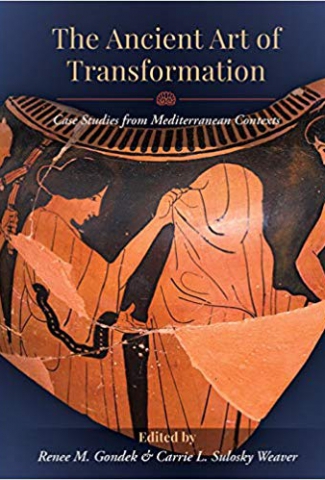
Pages 153-180 in R.M. Gondek and C.L. Sulosky Weaver (edd.), The Ancient Art of Transformation: Case Studies from Mediterranean Contexts
Romans of all social classes fervently sought some measure of immortality. Bearing witness to these desires, funerary monuments were constructed as appropriate memorials for the dead. Some were commissioned by the deceased themselves or, in the event no provisions had been made prior to death, then surviving family and friends often took it upon themselves to arrange a suitable memorial. A monument served as the deceased’s eternal home and the focus of the cult of the dead, broadcasting the deceased’s identity, social status, and ties to living survivors by means of images and text. Thus, through the commissioning, carving, and erection of funerary monuments, one was afforded an opportunity to simultaneously create a memory of the deceased and ensure its endurance for posterity. During the Early Imperial Period, marble cineraria were the most popular forms of funerary monuments. Augustan peace and stability had precipitated the rise of a middle class that was active in commerce and eager to display its newfound wealth and status. At the same time, Imperial building projects created a marble industry in Rome, making carved marble funerary monuments available and affordable. From the convergence of these social conditions, marble containers designed to hold the cremated remains of the dead were born. Often referred to as cineraria and produced in Rome from the first to the third century CE, their production peaked during the Neronian-Trajanic period. Typically, cineraria feature inscriptions and relief sculptures and vary considerably in size as well as complexity of decoration. From the work of Franz Cumont and Robert Garland to John Clarke, Katherine Dunbabin and Matthew Roller, no sculpted scene on cineraria has received as much scholarly attention as the so-called funerary banquet scene. In its simplest form, the funerary banquet scene consists of a single banqueter reclining on a funerary couch, and it derives from eastern Greek funerary reliefs from the second and first century BCE depicting a ritual meal in honor of the heroized dead. In Roman art, banqueting scenes occur in domestic as well as funerary contexts, and there is a lack of scholarly consensus as to what the scenes represent. Do they symbolize the opulence of elite dining events, activities of an idealized afterlife, or funerary feasts in honor of the deceased? A contextual iconographic and epigraphic analysis of 35 marble cineraria produced in Rome from the first to the second century CE suggests that the scenes were understood to represent earthly events attended by the deceased. Inscriptions reveal that the deceased were either freedmen or the children of freedmen. By appropriating banquet iconography, these freedmen were able to symbolically legitimize their claim to social belonging and form, or reaffirm, their place in Roman society. In death, freedmen seized the opportunity to be slightly greater than they were in life, which, given their backgrounds, was most attractive and desirable. Accordingly, banquet scenes and other motifs on the marble cineraria of freedman created enduring, social memories of the deceased, and ensured their preservation for posterity.
